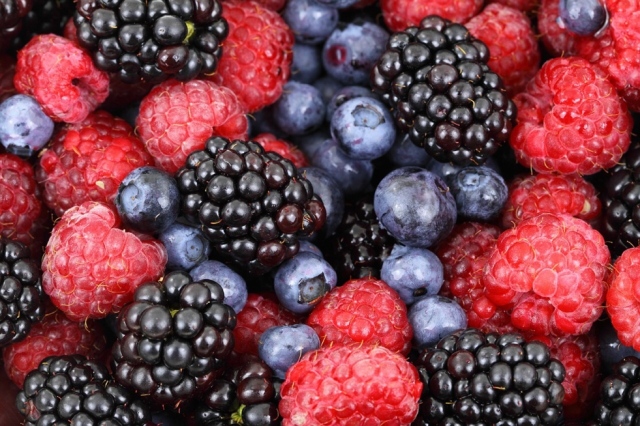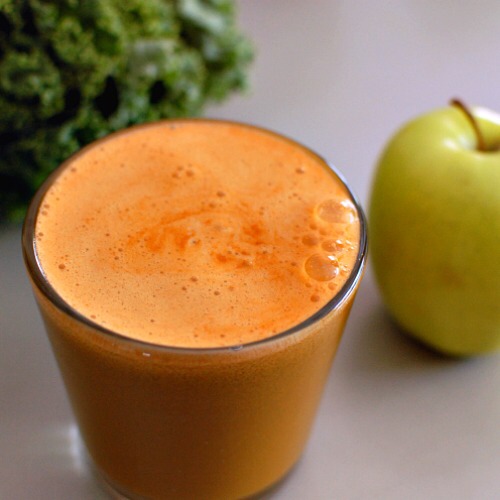-
Recent Posts
- Low-Carb Diet May Beat Low-Fat for Weight Loss and Heart Health
- PCOS and Pregnancy: Hormones are a Bitch
- The Surprising Food Flavor That Can Help You Shed Pounds
- Get the Skinny on Fats and Cholesterol: The Good, the Bad and How to choose…
- Prevent Heart Disease with Natural Healing Foods
- Pineapple Ginger Detox Juice
- Carrot Kale Detox Juice
-
- Follow For Vibrant Health on WordPress.com
Search Earlier Posts
Low-Carb Diet May Beat Low-Fat for Weight Loss and Heart Health
Posted in Health and Wellness
Leave a comment
The Surprising Food Flavor That Can Help You Shed Pounds
Posted in Health and Wellness
Leave a comment
Get the Skinny on Fats and Cholesterol: The Good, the Bad and How to choose…
 Fats and cholesterol are necessary for good health. Fats cushion vital organs, are used as stored energy, and serve as an insulator to preserve body heat. The body uses cholesterol to make estrogen, testosterone, vitamin D, and other vital compounds. Cholesterol is so important to our bodies, that the body can actually make all of the cholesterol it needs (about 1000 mg). Most people, however, get some cholesterol from the foods they eat. Only foods from animals, such as meats, dairy and eggs, have dietary cholesterol; plant based foods do not.
Fats and cholesterol are necessary for good health. Fats cushion vital organs, are used as stored energy, and serve as an insulator to preserve body heat. The body uses cholesterol to make estrogen, testosterone, vitamin D, and other vital compounds. Cholesterol is so important to our bodies, that the body can actually make all of the cholesterol it needs (about 1000 mg). Most people, however, get some cholesterol from the foods they eat. Only foods from animals, such as meats, dairy and eggs, have dietary cholesterol; plant based foods do not.
Fat and cholesterol are carried through the bloodstream in protein-covered particles called lipoproteins. Low-density lipoproteins (LDL) carry cholesterol from the liver to the rest of the body. When there is too much LDL cholesterol in the blood, it forms deposits or plaques in the artery walls. This plaque narrows the arteries and limits blood flow; heart attacks and strokes are caused when plaque breaks apart. Because of this, LDL cholesterol is often referred to as “bad” cholesterol.
High-density lipoproteins (HDL) are essentially the opposite of LDL cholesterol. High-density lipoproteins go around the body sweeping up as much cholesterol from the bloodstream and artery walls as they can and ferry it back to the liver. HDL also contains antioxidant molecules that help prevent LDL cholesterol from being changed into unhealthy lipoproteins. This is why HDL cholesterol is often referred to as “good” cholesterol.
The types of dietary fat consumed determine, to a large extent, the amount of HDL and LDL cholesterol, as well as total cholesterol in the bloodstream. Monounsaturated and polyunsaturated fats lower disease risk. Saturated and Trans fats increase the risk for disease. Foods high in “good” fats include vegetable oils, nuts, seeds, and fish. Foods high in “bad” fats include red meat, butter, cheese, ice cream, and foods made with partially hydrogenated oil. The key to a healthy diet is to choose foods that have more good fats than bad fats; choose vegetable oils instead of butter, salmon instead of steak and choose foods that don’t contain any Trans fat.
Prevent Heart Disease with Natural Healing Foods

Heart Disease
Heart disease is a leading cause of death. Although you cannot control certain factors like age and family history, you can use food and nutrition to help you prevent heart disease.
Apples
Apples are full of antioxidant compounds which help inhibit inflammation and lower levels of cholesterol and two other markers associated with plaque and inflammation in artery walls. Apples are also high in fiber which has been shown to lower cholesterol level. Studies have shown that frequent apple eaters have reduced risk of suffering from heart attacks and strokes compared with non-apple eaters.
Blackberries
Blackberries may help to prevent heart disease by inactivating the enzymes that damage the endothelial cells lining the blood vessels. They contain high amounts of fiber, are rich in polyphenols, vitamin C, and contain a bit of iron, calcium, and vitamin A. The antioxidants in blackberries also protect the cells of the cardiovascular system from harmful effects of unstable oxygen radicals.
Blueberries
Blueberries have a high anthocyanin content. Anthocyanin has been shown to dilate arteries, counter the buildup of plaque, and provide other cardiovascular benefits. Blueberries are also rich in fiber and antioxidants which also help reduce the likelihood of heart attacks. A Harvard School of Public Health study published in the January 2013 issue of the Journal of the American Heart Association, found that eating three or more servings of blueberries per week may reduce a woman’s risk of heart attack by as much as 33%.
Carrots
Diets high in carrots are associated with a lower risk of heart disease. Carrots are high in fiber and beta-carotene, nutrients which help keep blood pressure down and reduce cholesterol levels, thus reducing the risk of heart disease. Studies indicate that consuming about 2 baby carrots daily can lower the risk of coronary heart disease by approximately 32%.
Coconut
Many people can’t imagine how a food high in saturated fat, like coconut, can be beneficial for the heart. Coconut oil is beneficial for the heart because it contains about 50% lauric acid, which helps in preventing various heart problems including high cholesterol levels and high blood pressure. In addition, the saturated fats present in coconut oil are Medium Chain Triglycerides (MCT’s) which do not lead to an increase in LDL levels. Coconut actually protects against heart disease by increasing good cholesterol and lowering the ratio of bad to good cholesterol.
Kiwi
Kiwis can be considered a superfood for your heart. The Cleveland Clinic has recommended kiwis as one of the most powerful foods for the heart. Kiwis help to lower triglyceride levels and reduce platelet hyperactivity which plays a role in the development and stability of atherosclerotic vascular plaques and limits the tendency of blood to form clots. The vitamin C and E in kiwis, combined with the polyphenols and magnesium, potassium, B vitamins, and copper, act to protect the cardiovascular system.
Hot Peppers
Hot peppers are a heart healthy food. The compounds in hot peppers, including capsaicin, have been found to lower blood pressure, decrease cholesterol levels, and reduce the risk for dangerous blood clots.
Oats
The accumulation of cholesterol is implicated in many types of cardiovascular disease. Oatmeal and oat bran are significant sources of soluble and insoluble fiber. One component of the soluble fiber found in oats is beta-glucans, which has proven effective in lowering blood cholesterol. Oats are also one of the best sources of compounds called tocotrienols which inhibit cholesterol synthesis and have been found to lower blood cholesterol. Research also indicates that the antioxidants found in oats reduce cholesterol by reducing the ability of blood cells to stick to the inside of artery walls. A daily bowl of oatmeal can lower cholesterol by up to 23 percent and reduce the risk of heart disease by almost half.
Olives
Oleuropein is found exclusively in olives and has been shown to decrease oxidation of LDL cholesterol. In addition, the high monounsaturated fat content of olives has been associated with reduced risk of cardiovascular disease and decreased blood pressure. The oleic acid found in olives affects changes at cell membrane levels which result in decreased blood pressure.
Pomegranate
The potent antioxidant compounds in pomegranates have been shown to reduce platelet aggregation, reduce atherosclerosis, and lower blood pressure. A recent medical study published in the journal of Clinical Nutrition found that patients with severe carotid artery blockages who drank a glass a pomegranate juice every day for a year saw a 12% reduction in blood pressure and a 30% reduction in atherosclerotic plaque. Pomegranates contain high levels of flavonoids and polyphenols, potent antioxidants that protect against heart disease.
Posted in Health and Wellness
2 Comments
Pineapple Ginger Detox Juice

This purifying beverage contains pineapples which have bromelain to aid digestion, apples which help keep the liver from absorbing cholesterol and binds to heavy metals in the body, and ginger to help stimulate bile flow.
Posted in Health and Wellness
Leave a comment
Carrot Kale Detox Juice
This juice is rich in omega-3 fatty acids and sulphur which will help detox your liver. It has offers vitamins A & C to boost your immune system. The lemon and ginger gives each sip of this delicious juice a nice tangy kick, while the kale adds a savory touch that keeps the carrot and orange from becoming overly sweet.

Carrot Kale Detox Juice Recipe
2 oranges, zest and pith removed2 apples, cores removed
4 carrots
2 cups chopped kale
½ inch of fresh ginger root
1 tablespoon flax oil
Run all ingredients through the juicer except the oil. Pour in glass. Stir in the flax oil.
Posted in Health and Wellness
Leave a comment
Common Symptoms of Toxic Liver
There are many symptoms associated with a poorly functioning liver. Let’s explore some of the most common symptoms:

Chronic Fatigue
The liver is intimately involved in supplying the body with energy. When blood is loaded with toxins due to an overburdened and inefficient liver, there is limited capacity for the blood to carry oxygen and nutrients which are necessary for energy production. Chronic fatigue is therefore one of the most common symptoms of toxic liver. Many people with overburdened livers will wake up in the morning feeling exhausted and drained, as if they have had no sleep at all. If you are getting adequate sleep and exercise, but still feel “exhausted all the time”, chances are that your liver is toxic and overburdened. When toxins “back up” because your liver is overloaded with them, it places a heavy burden on the liver and the whole body tires out.
Digestive Problems
Out of the many functions that the liver performs, the most important is to produce bile, which helps in digestion through the process of emulsification of lipids. A sluggish liver produces less bile, causing many digestion problems such as acid reflux, abdominal bloating, flatulence, hemorrhoids, intolerance to fatty foods, gallstones, nausea and vomiting, constipation, irritable bowel syndrome, and intolerance to alcohol.
Hormonal Imbalances
The liver is one of the most important organs for hormone regulation. Although the liver itself does not make hormones, it does play a significant role in hormonal regulation because it metabolizes the hormones once they have done their work in the body. The liver breaks down steroid hormones including aldosterone, cortisone and the sex hormones which control our sexual life and body shape.
A person with toxic liver would exhibit hormonal imbalance symptoms such as sleep disturbances, poor concentration, and depression. A toxic liver can be the catalyst for various forms of depression and can lead to moodiness, feelings of despair, and occasional outbursts of anger. Women can also experience heavy menstruation, irregular periods, fluid retention, fibroids in breast or uterus, hot flashes, ovarian cysts, mood swings and/or menopausal problems.
Skin Problems
Since the liver plays an important role in eliminating toxins from the body, skin irritation or skin allergies are common signs of toxic liver. Rashes, psoriasis, eczema, boils or acne can indicate that the overloaded liver is trying to remove toxins through the skin. A person with a toxic liver may also exhibit excessive sweating, red palms and soles, coated tongue, bad breath, dark circles under the eyes, offensive body odor, itchy eyes, and flushed facial appearance.
Weight Gain
Insulin is a peptide hormone produced in pancreas, and is central to regulating fat and carbohydrate metabolism in the body. Insulin stops the use of fat as an energy source by inhibiting the release of glucagon. High levels of insulin promote the storage of fat, especially in the abdominal area. High levels of insulin in the body signal the liver to store more fat, this results in more abdominal fat and eventually a fatty liver. A fatty liver is very sluggish and is not able to break down hormones efficiently causing further weight gain and fluid retention. When your liver is clogged with toxins and fat, the process of breaking down fats for fuel becomes more difficult for the liver and it begins to store more of the fat it cannot break down.
Posted in Health and Wellness
Leave a comment
Leading Causes of Toxic Liver
The liver supports almost every organ in the body and is vital for survival. Unfortunately, due to its major role, the liver is prone to many conditions and diseases. The most common conditions that affect the liver include liver toxicity and fatty liver as well as infections such as hepatitis and cirrhosis.
One of the main functions of the liver is to remove toxins and other harmful substances from the bloodstream. This process can be disrupted if toxins enter the bloodstream at a rate faster than the liver’s ability to break them down, resulting in toxic liver and poor liver function.
Generally, the liver purifies harmful substances in the blood stream making them harmless to the body. Waste products are either converted into bile to be removed in the stool or filtered back into the bloodstream to be expelled in urine. When the liver is functioning normally, waste products are removed as they come in preventing liver toxicity. Consuming excessive amounts of harmful substances can overwhelm the liver’s purification ability and begin to accumulate, creating a toxic poisonous environment in the liver. When the liver overloaded with these toxins, its ability to secret bile, breakdown fats, filter harmful substances, store nutrients, remove pathogens, resist infections, and make important life-giving substances such as cholesterol, glucose, and albumin, is greatly compromised.
Causes of Toxic Liver

Many common circumstances can hinder the liver’s ability to function properly, causing it to accumulate high levels of toxic substances and compromising its health.
A toxic liver can happen as a result of the following:
Alcohol Consumption
The connection between heavy alcohol consumption and liver disease has been recognized for centuries. Alcohol can damage the liver cells and lead to a fatty liver. If the alcohol consumption is excessive and/or repetitive the damage can sometimes be irreparable. In the United States, excessive alcohol consumption is the number one cause of liver disease.
Chemical Exposure
Over exposure to chemical solvents and cleaning products, can injure the liver thus rendering it ineffective to rid the body of these toxins.
Cigarettes
Cigarettes are not only harmful to your lungs and heart, but they can also severely affect your liver. The toxins in cigarettes overburden the liver causing inflammation and scarring.
Lack of exercise
A lack of exercise is associated with obesity and decreased blood flow to the tissues of the body resulting in congestion of the liver.
Medications
The liver is responsible for converting drugs into forms that can be readily eliminated from the body. Any medications or drugs you ingest need to be filtered through your liver. This includes prescription medicines, over-the-counter medications, supplements and recreational drugs. The more you take in, the harder your liver has work and is therefore more likely become overloaded. Some of these substances can contain ingredients that are quite harmful to the liver. Acetaminophen (Tylenol) is known to be especially toxic to the liver in excessive amounts. Your liver breaks down acetaminophen into a toxic metabolite but uses glutathione to prevent the poisonous substance from harming the liver. If you consume too much acetaminophen, your liver may not have enough glutathione to neutralize the poison and will leave your liver vulnerable to damage. NSAID medications such ibuprofen and naproxen have also been shown to be toxic to the liver in excessive amounts.
Preservatives
These synthetic agents are foreign to the body and are processed by the liver in much the same way as drugs and medications.
Pesticides
Over two million tons of industrial pesticides are used each year around the world. Pesticides are not just deadly to pests and insects, but are acutely toxic to human beings as well. Unfortunately, most pesticides end up in our food and water sources. Unless you choose only organic products, your liver has to filter all of the pesticides you ingest; the more pesticides you ingest, the more overburdened your liver becomes.
Heavy Metals
High levels of heavy metals such as mercury and lead deplete levels of glutathione, narrow the liver’s blood vessels, and increase levels of LDL cholesterol (bad cholesterol). These heavy metals cause liver cells to become enlarged, die more rapidly, and be replaced by fatty deposits. This results in inflammation of the liver and poor liver function.
Poor diet
A poor diet rich in bad fats, low in fiber, high in simple carbohydrate can put you at risk of developing an accumulation of fats and toxins in the liver cells resulting in a sluggish poor functioning liver.
Posted in Health and Wellness
Tagged cleanse, detox, detox diet, detoxification, fatty liver, liver cleanse, liver detox, liver detox diet
Leave a comment
Quinoa Salad with Almonds and Cranberries
Quinoa Salad with Almonds and Cranberries
¼ cup dry quinoa ½ cup vegetable broth 1 teaspoon fresh lemon juice 1 teaspoon extra virgin olive oil 1 teaspoon chopped fresh parsley 1 tablespoons finely chopped red bell pepper ½ small onion chopped ¼ cup dried cranberries ¼ cup almond slivers Sea salt to tasteCook the quinoa in the low sodium vegetable broth and water.Cover the pot, bring to a full boil, then reduce to low and simmer for about 15 minutes. Remove from heat and set aside to cool. In a small bowl, whisk the fresh lemon juice, salt and olive oil. In a large bowl, combine the cooked quinoa with the parsley, onions, bell peppers, almonds and cranberries. Pour the lemon dressing over the top and toss to coat well.
Posted in Health and Wellness
Leave a comment



